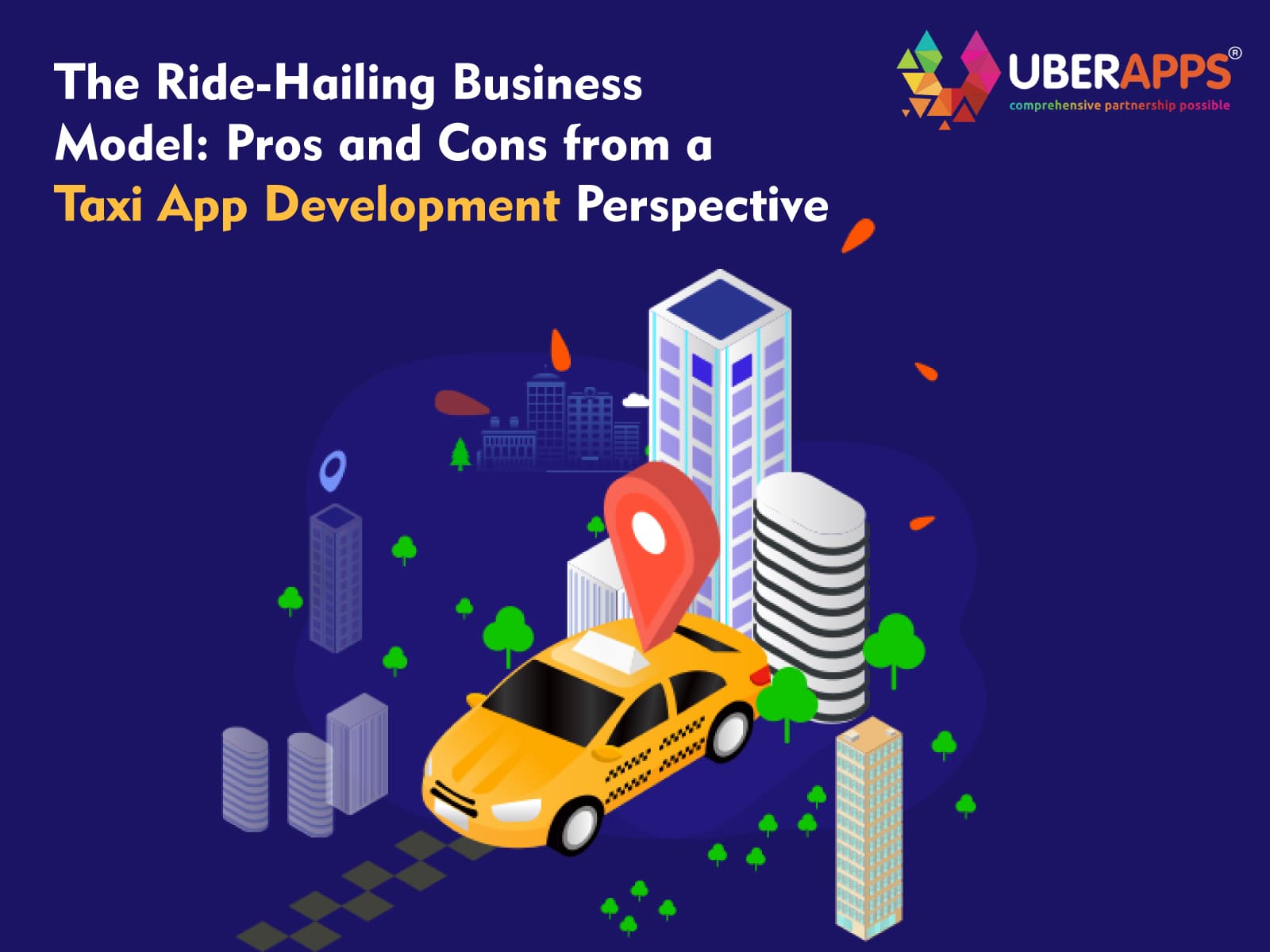
The Ride-Hailing Business Model: Pros and Cons from a Taxi App Development Perspective
The rise of ride-hailing apps has undeniably reshaped the landscape of personal transportation, presenting both immense opportunities and significant challenges. As a taxi app development company at the forefront of this technological revolution, we have witnessed the transformative impact of these platforms on the way we move within our cities. In this blog post, we explore the nuanced benefits and drawbacks of the ride-hailing business model from the unique lens of our industry expertise. We aim to provide a balanced perspective on how these innovations not only enhance service delivery and operational efficiency but also introduce complexities that businesses must strategically navigate. Join us as we delve into the pros and cons of ride-hailing, offering insights into what these developments mean for entrepreneurs, drivers, and the transportation ecosystem as a whole. Here, we explore the pros and cons of the ride-hailing business model.
The blog examines the ride-hailing business model from a taxi app development company's perspective, highlighting both its advantages and drawbacks. Pros include increased accessibility, flexible employment for drivers, efficient resource utilization, scalability, and data-driven insights which help optimize services and pricing. On the downside, the model faces regulatory challenges, requires high initial investment, suffers from intense competition and market saturation, leads to price wars with low profit margins, and creates job security and earnings instability for drivers. Despite these challenges, the model presents significant opportunities for growth and innovation in urban mobility.
Pros of the Ride-Hailing Business Model
- Increased Accessibility: One of the most significant benefits of ride-hailing apps is the enhanced accessibility they provide. Customers can summon a ride with just a few taps on their smartphone, making it an incredibly convenient option compared to traditional taxi services.
- Flexible Employment Opportunities: Ride-hailing platforms offer drivers the flexibility to choose their working hours, allowing them to work part-time or full-time based on their convenience. This flexibility is often cited as a major draw for joining ride-hailing services as a driver.
- Efficient Resource Utilization: By matching riders with drivers who have empty seats, ride-hailing apps make better use of existing vehicles. This can potentially reduce the number of cars on the road, leading to less congestion and lower emissions.
- Scalability: The digital nature of ride-hailing platforms allows them to scale up quickly and efficiently. Once the technology is developed, it can be deployed in new regions with minimal incremental cost, providing businesses with rapid geographical expansion.
- Data-Driven Insights: Ride-hailing apps collect vast amounts of data on travel patterns, which can be used to optimize routes, reduce wait times, and improve overall service quality. These insights also allow for dynamic pricing models that can increase profitability.
Cons of the Ride-Hailing Business Model
- Regulatory Challenges: Ride-hailing companies often face significant regulatory hurdles in various markets. The lack of a uniform regulatory framework can lead to complications in operations, including legal battles and fines.
- High Initial Investment: Developing a robust ride-hailing app requires significant upfront investment in technology development, including app design, testing, and security measures. Additionally, initial marketing costs to attract both drivers and riders can be substantial.
- Competition and Market Saturation: The success of prominent ride-hailing companies has led to a crowded marketplace with intense competition. Standing out in a saturated market requires constant innovation and substantial marketing efforts, which can strain resources.
- Price Wars and Lower Profit Margins: In competitive markets, price wars are common, which can erode profit margins. Companies often subsidize fares to attract riders, a practice that is unsustainable in the long term without additional revenue streams.
- Impact on Drivers’ Earnings and Job Security: The gig economy model of ride-hailing can lead to uncertainties regarding drivers' earnings and job security. The lack of benefits such as health insurance and retirement plans is a significant drawback for drivers.
Conclusion
In conclusion, the ride-hailing business model offers a dynamic landscape filled with opportunities for innovation and growth, yet it is not without its challenges. As a leading taxi app development company, we are committed to navigating these complexities alongside our clients, ensuring that they are equipped to thrive in this competitive market. By continuously refining our technologies and strategies, we aim to enhance the efficiencies of ride-hailing services while addressing the inherent challenges they face. The future of urban mobility is promising, and through collaborative efforts, strategic planning, and cutting-edge technology, we can unlock the full potential of ride-hailing to create more connected and efficient cities.
Ready to launch a taxi service with our Saas Based Taxi App Development Company? Discover our UberApps Taxi App, inspired by Uber — your fastest route to owning a thriving taxi business.
Author's Bio

Vinay Jain is the Founder of UBERApps and brings over 10 years of entrepreneurial experience. His focus revolves around software & business development and customer satisfaction.

